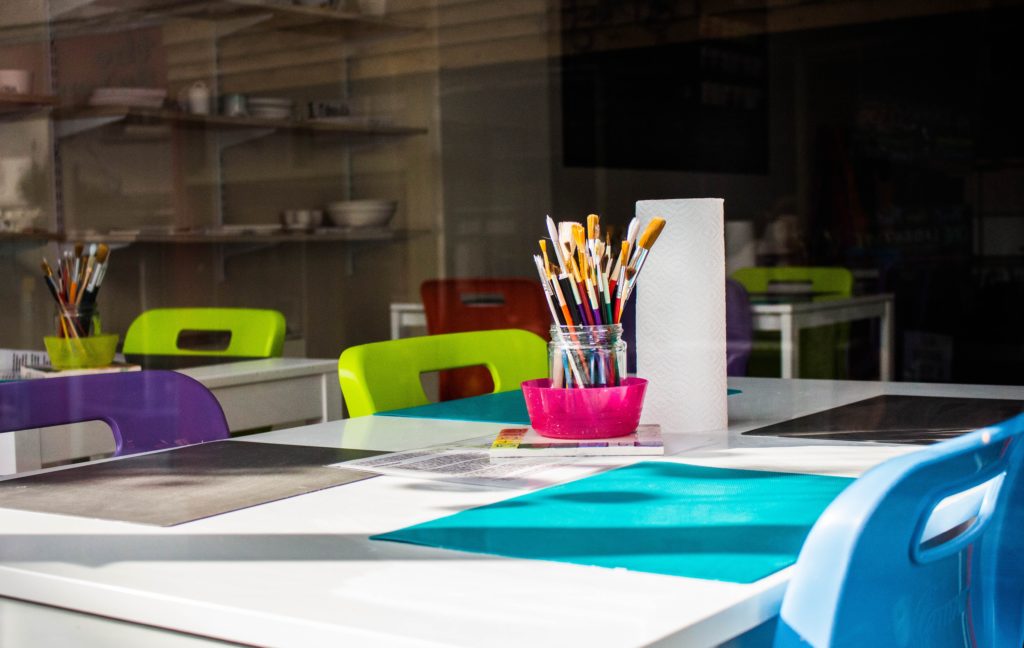
Learning Styles and Second Language Acquisition
Linda D’Argenio, Ph. D.
Everyone who has worked in education for any length of time has realized at some point that the “one size fits all” teaching model is often inadequate to reach all students. Learners, young and old, all tend to learn in various ways and at different paces. It benefits both students and teachers to be aware of one’s learning style. Students become consciously cognizant of their own needs, and teachers are able to modify their teaching strategy to help students meet specific challenges.
What are learning styles?
But what exactly are “learning styles”?
Learning styles refer to the preferred modality a person uses to acquire, process, and deliver information. They are most commonly classified using two main systems:
The VAK system (https://vark-learn.com/introduction-to-vark/): This system was devised in 1979 by educator Walter Barbe. VAK is an acronym for Visual, Aural, and Kinesthetic. According to their preferences, learners are divided into these three categories or a combination of them. Visual learners will respond better to information that is visual or visually organized, such as graphs, charts, videos, etc. Aural learners respond better to auditory or spoken information, e.g. lectures, podcasts, etc. Finally, kinesthetic learners are those that learn best by doing, by actual experience. (For a simple explanation of VAK, watch this short video https://www.youtube.com/watch?v=P0vjnKqj1-g&t=17s Or read the article: https://tracyharringtonatkinson.com/barbes-vak-learning-style/)
In 1992, Fleming and Mills introduced a fourth category in the VAK system, read/write. These are the learners that absorb and deliver information best through reading and writing (textbooks, note-taking, essay-writing, etc.) Enter the VARK system of classifying learning styles. (You can read about VARK here https://vark-learn.com/introduction-to-vark/)
In How Do I Learn Best – a student’s guide to improved learning, authors Fleming and Bonwell provide a set of 16 questions to assist learners in identifying their own learning style and suggest strategies to leverage one’s learning modality when studying.
Most learners do not fit neatly into one category. Rather, the majority of people present a combination of learning styles. Both the VAK and VARK questionnaires (available online) will account for these combinations by assigning points to each modality.
Finally, three more categories of learning styles were introduced by Sean Whiteley, the inventor of “memletics.” Memletics, a word derived from memory + athletics, is basically a learning theory that recognizes memory as an essential factor in learning and suggests strategies to more effectively retain the information acquired during the learning process. Building upon the above-mentioned learning styles (visual, aural, read/write, and kinesthetic,) Whiteley adds three further modalities: logical, social, and solitary. A description of memletics goes beyond the scope of this article. Interested readers can download a PDF of Whiteley’s Memletics Accelerated Learning Manual here.
Below is a brief description of each modality introduced by Whitely in his own words:
Logical Style
“If you use the logical style, you like using your brain for logical and mathematical reasoning. You can recognize patterns easily, as well as connections between seemingly meaningless content. This also leads you to classify and group information to help you learn or understand it. You work well with numbers and you can perform complex calculations. (…) You typically work through problems and issues in a systematic way, and you like to create procedures for future use.”
Social Style
“If you have a strong social style, you communicate well with people, both verbally and non-verbally. People listen to you or come to you for advice, and you are sensitive to their motivations, feelings, or moods. You listen well and understand others’ views. You may enjoy mentoring or counseling others. You typically prefer learning in groups or classes, or you like to spend much one-on-one time with a teacher or an instructor. You heighten your learning by bouncing your thoughts off other people and listening to how they respond.”
Solitary Style
“If you have a solitary style, you are more private, introspective, and independent. You can concentrate well, focusing your thoughts and feelings on your current topic. (…) You spend time on self-analysis, and often reflect on past events and the way you approached them. (…) You like to spend time alone. You may have a personal hobby. (…) You prefer to work on problems by retreating to somewhere quiet and working through possible solutions.”
Whitely’s Memletics manual includes a lengthy questionnaire to help readers identify their own learning style or combination thereof.
It is worth noting that awareness of one’s learning modality is important not only for students but also for teachers. Teachers also have their preferences when it comes to learning, and it is only natural that they would tend to use their preferred modality when transmitting information to students. As teachers, we need to be careful not to use uniquely those teaching strategies that are most compatible with our personal communication modality, but rather offer students a variety of means to acquire information.
How can we leverage learning styles to reach more students?
By using activities that appeal to different kinds of learning modalities, we can ensure that all students are actively engaged in learning. Multimodal activities are therefore particularly important. By designing an activity that engages a variety of learning styles, you can make sure that learners in your class will find at least one aspect of the task that appeals to them and where they can do their best.
However, awareness of learning styles is not sufficient to form successful learners. Learning styles should be a gateway to understanding one’s own or others’ learning modalities, not a limitation. Although some students may prefer to see a graph rather than study a vocabulary list, still, their preferences should be challenged in order for the students’ abilities to be broadened.
Once teachers have established students’ individual learning styles, they can work with them to develop other abilities. One way of doing this is by evaluating and understanding students’ strengths and weaknesses and leveraging their interests and passions; we may be passionate about things we are not good at. In such cases, that passion can be used as an entry point to help students overcome challenges.
You can start with a few straightforward questions. Notice that some of the questions apply specifically to language students. You can design your own questions to obtain a student’s learning profile in your subject:
- What are your favorite subjects? Why?
- In which subjects do you feel you are the most successful?
- Are there any subjects you really like but find difficult to learn?
- Do you speak another language? If yes, which one, and when did you learn it?
- How do you usually learn vocabulary and practice speaking?
- How do you feel you learn best?
- What do you like to do in your free time?
- Do you have any hobbies?
- Do you prefer to work alone or with others?
Questions like the ones above can be used to supplement the information acquired from the VAK/VARK questionnaires in order to help teachers design tasks geared towards specific students’ needs. Generally speaking, teaching strategies that use a variety of tasks or steps will appeal to a greater number of students.
Click here to see some examples of multimodal activities.
2022/01/01

I’m interested in learning Spanish
Hi Barbara,
I sent you a message to the email address you provided. Hope to hear from you soon!
Hi Barbara,
If you would like to discuss Spanish classes, you can call us at 917 783-7226 or email us at thelearningcoopteam@gmail.com. We can also call you if you provide us with a phone number. In the meanwhile, you can visit this page to find out about our plans and solutions: https://www.thelearningco-op.org/solutions/
We hope to hear from you soon!